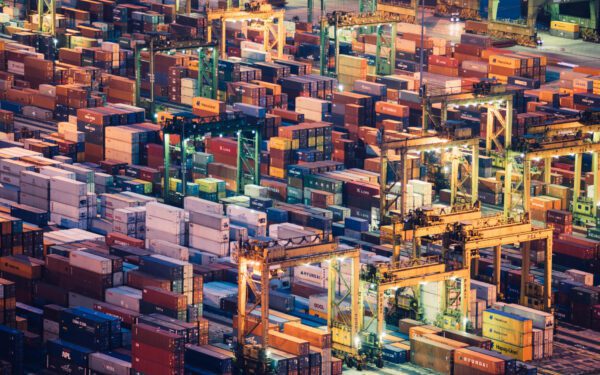Will ports once again become the catalyst of an industrial revolution?
With the transformation towards climate neutrality, our ports are on the eve of a total metamorphosis. But this is not the first time: in the 1950s, a ten-year plan installed basic chemicals in the port of Antwerp. With the Flemish port strategy, another ten-year plan is on the table. The aim: to turn the ports into hubs for renewable energy in north-western Europe.
The 1960s saw the industrialisation of the port of Antwerp. Several refineries had established themselves in the Marshall dock, and when the Kanaaldok was commissioned in 1965, basic chemicals appeared, accepting petroleum in thanks as a raw material. With the arrival of the RAPL, the 100 km pipeline between Rotterdam and Antwerp in 1971, the transition was complete: some 30 million crude oil flowed through the pipeline every year.
Underlying that industrialisation was a 10-year plan for the port of Antwerp, directed by the Belgian government (1956-1965). It involved massive investments (some BEF 3.5 billion, converted to inflation: some 750 million euros) to modernise and expand the port. Result: dock volume doubled and Antwerp grew to become the leading European chemical cluster.
The upheaval was immense: a port mainly focused on automotive distribution and cargo handling evolved into trade activities and high value-added chemistry. And all this was facilitated and made possible by a strong government.
Flemish port strategy
We can learn lessons from this today -as minister Lydia Peeters presents the new Flemish Port Strategy. The challenge is clear: a new, climate-neutral and circular industry, maximally electrified and built on new energy carriers. Especially now that the engine seems to be sputtering (employment and added value of our ports are no longer rising), it is time to take the flight forward…,
The Flemish Ports Strategy focuses on three noble ‘objectives’: strengthening competitive position, sustainable growth and increasing added value. But these are old recipes. The ambition to become a real pioneer within the port world, or the link to the climate for that matter, is missing.
Put the Flemish port strategy next to the Dutch port strategy 2020-2030 and you see it immediately. The Dutch vision starts from the opportunities of a green transition and recognises the risks (there will be losers, e.g. the refineries) and challenges (we must focus on innovation) of the energy and industry transition.
Ports and industry are inextricably linked: basic chemicals came here because the port was able to play off its agglomeration effects, in addition to a number of other assets such as its geographical location and cheap raw materials in the vicinity, and chemicals subsequently ensured the port’s growth. It is therefore important that an ambitious industrial transition is woven into port policy and hence port strategy.

Ports have leverage
Since the 1950s, the division of powers around ports has naturally changed. With the advent of the port decree and the regionalisation of powers, the federal government no longer has any say. Today, with the port companies, Flanders has the perfect lever in its hands to take the road towards climate neutrality. The challenges are not minor: industry in Flanders is responsible for 40% of emissions (some 25 million tonnes of CO2). Industry in the ports is mainly fossil-oriented. A complete turnaround is urgently needed.
The ports must become pathfinders for the transition. For instance, they need to put more effort into modal shift (moving transport from road to rail and inland navigation), installing shore power (electricity for ships) and tightening the concession policy (conditions for companies that establish themselves there). But they can do more: just as they once built infrastructure for petroleum pipelines – which we must now move away from – ports will have to provide infrastructure through which we can transport hydrogen, electricity and synthetic fuels. That way, our ports can become new clean energy hubs and hubs. Very concretely, ships sail in and out of the port, on green fuels made in the port. Thus, the circle is complete.
Get to work
A ten-year plan is what was needed to complete the titanic task of installing basic chemicals in the port of Antwerp. The Flemish port strategy also has a 10-year horizon. In those 10 years, Flanders must invest heavily in the industry transition. This will only be successful if our ports become true pioneers again, growing into new energy hubs that can feed and help transform the entire hinterland of Northwest Europe. This will really strengthen our competitive position and employment.
This post by Tycho Van Hauwaert “Worden havens opnieuw de katalysator van een industriële omwenteling?” first appeared on bondbeterleefmilieu.be – January 7, 2022.

